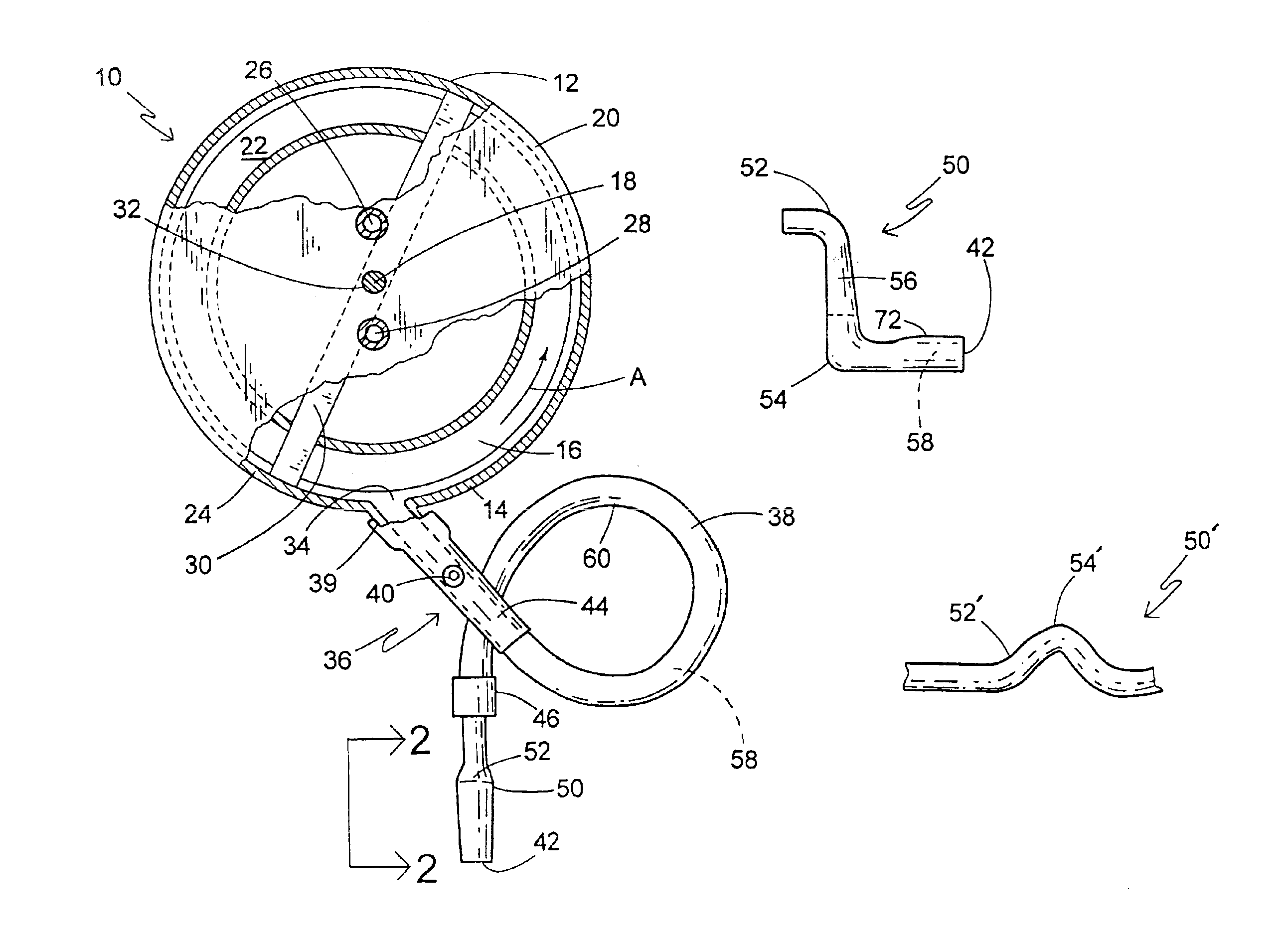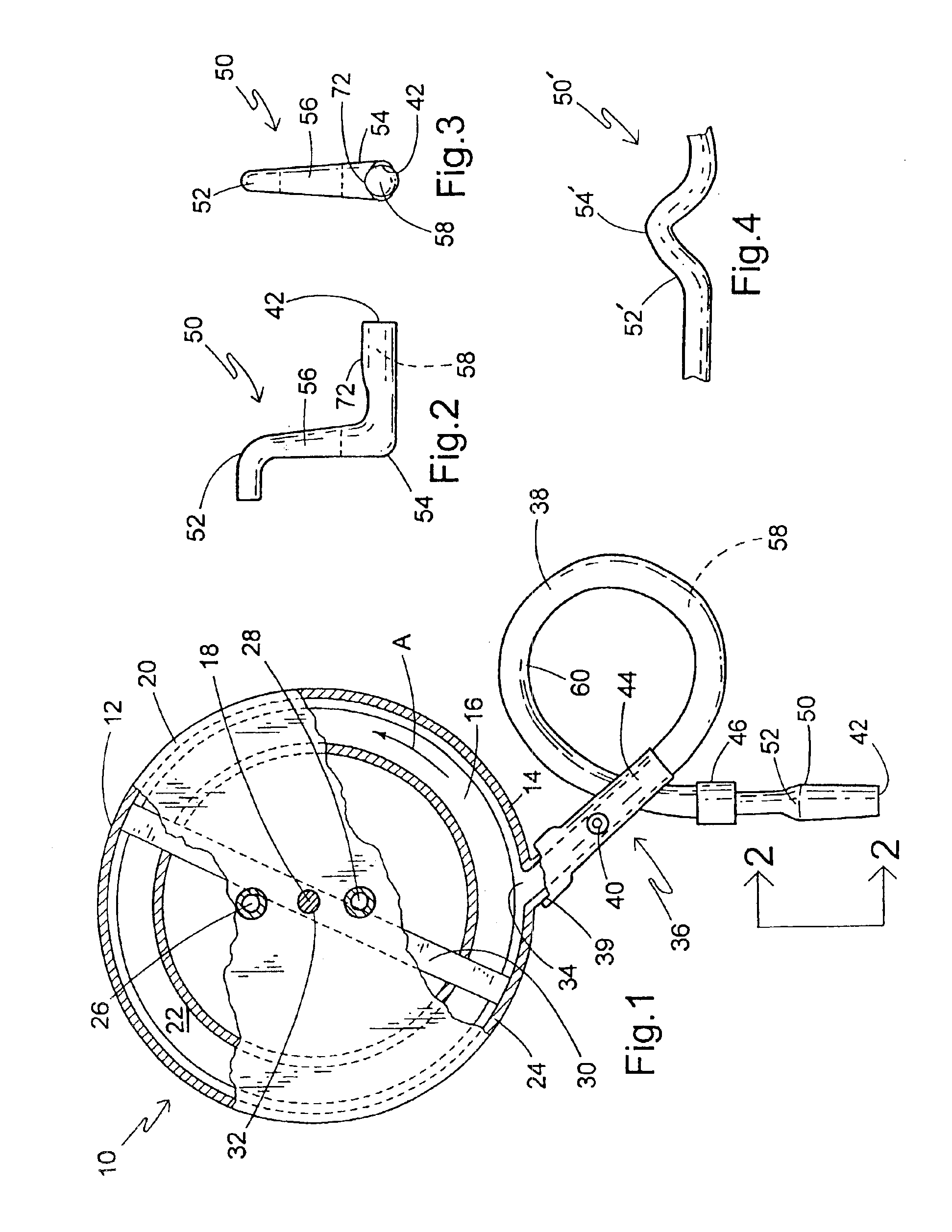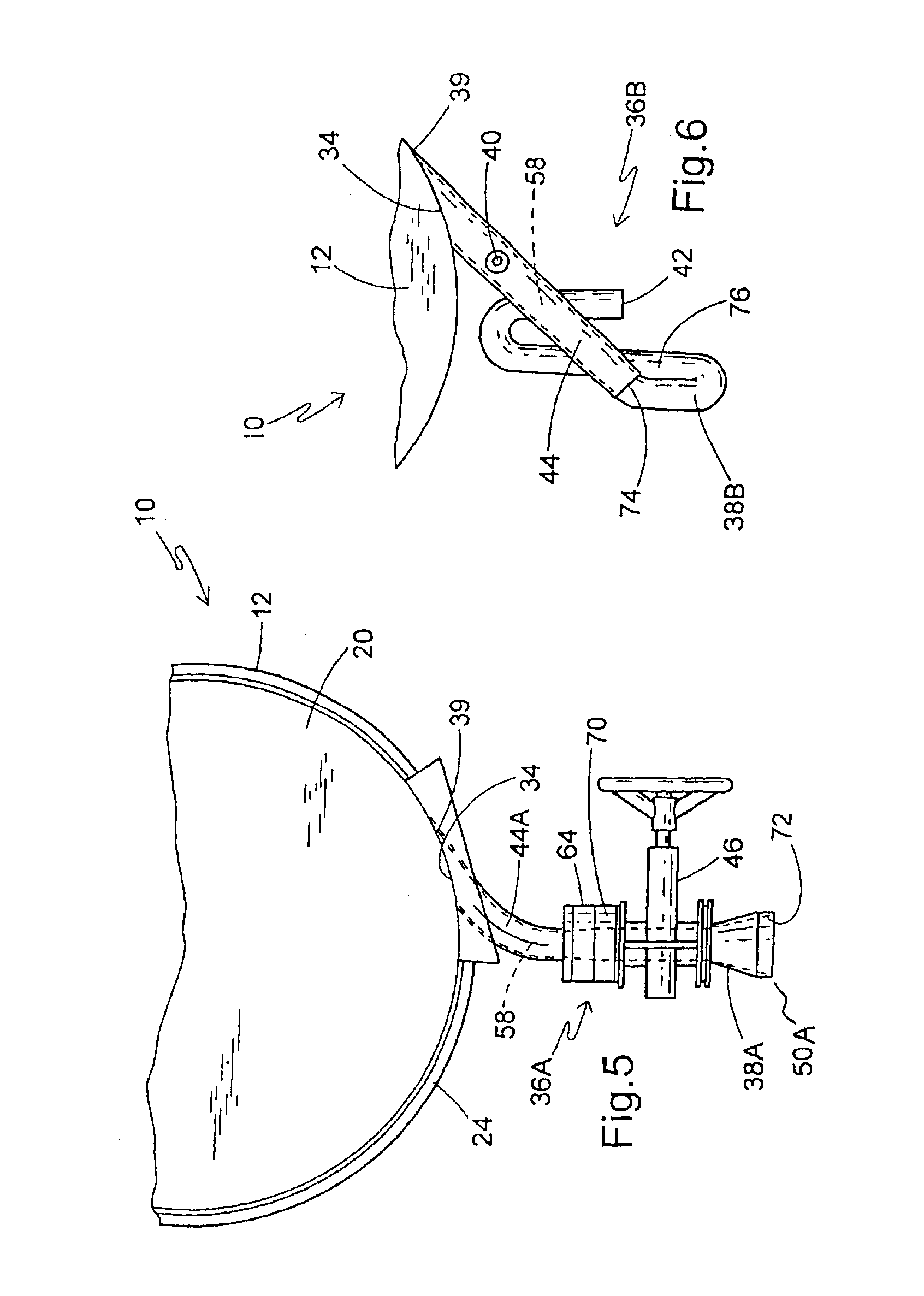Slurry mixer outlet
a slurry mixer and outlet technology, applied in the field of slurry mixers, can solve the problems of clogging of the apparatus, difficult adjustment of the flow of slurry, and separation of materials in the mix, so as to prevent the occurrence of mixer or conduit lumps and/or paper breaks, and reduce the occurrence of unwanted premature setting of gypsum
- Summary
- Abstract
- Description
- Claims
- Application Information
AI Technical Summary
Benefits of technology
Problems solved by technology
Method used
Image
Examples
Embodiment Construction
Referring now to FIG. 1, a mixing apparatus for mixing and dispensing a slurry is generally designated 10 and includes a mixer 12 having a housing 14 configured for receiving and mixing the slurry. The housing 14 defines a mixing chamber 16 which is preferably generally cylindrical in shape, has a generally vertical axis 18, and upper radial wall 20, a lower radial wall 22 and an annular peripheral wall 24. An inlet 26 for calcined gypsum and an inlet 28 for water are both positioned the upper radial wall 20 proximate the vertical axis 18. It should be appreciated that the inlets 26, 28 are connected to gypsum and water supply containers respectively (not shown), such that gypsum and water can be supplied to the mixing chamber 16 by simple gravity feed. Also, as is well known in the art, other materials or additives in addition to gypsum and water, often employed in slurries to prepare gypsum products (e.g. accelerators, retarders, fillers, starch, binders, strengtheners, etc.) can ...
PUM
| Property | Measurement | Unit |
|---|---|---|
| diameter | aaaaa | aaaaa |
| length | aaaaa | aaaaa |
| inner diameter | aaaaa | aaaaa |
Abstract
Description
Claims
Application Information
 Login to View More
Login to View More - R&D
- Intellectual Property
- Life Sciences
- Materials
- Tech Scout
- Unparalleled Data Quality
- Higher Quality Content
- 60% Fewer Hallucinations
Browse by: Latest US Patents, China's latest patents, Technical Efficacy Thesaurus, Application Domain, Technology Topic, Popular Technical Reports.
© 2025 PatSnap. All rights reserved.Legal|Privacy policy|Modern Slavery Act Transparency Statement|Sitemap|About US| Contact US: help@patsnap.com



